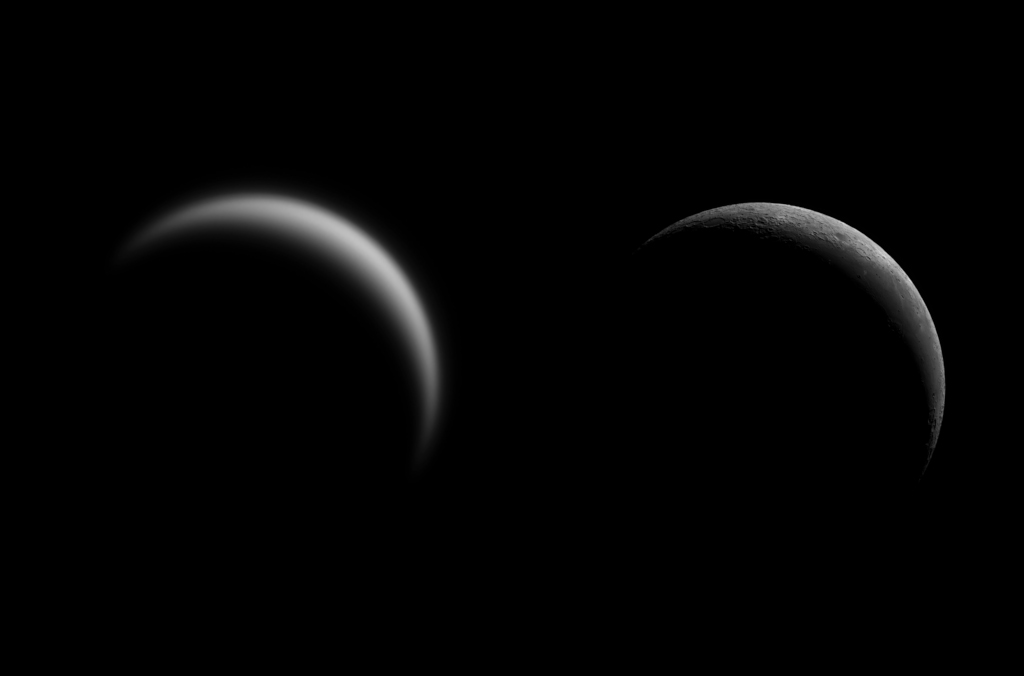2022年2月3日
Embraced by Sunlight
Image Credit & Copyright: Juan Luis Cánovas Pérez
Explanation: Even though Venus (left) was the brightest planet in the sky it was less than 1/30th the apparent size of the Moon on January 29. But as both rose before the Sun they shared a crescent phase. For a moment their visible disks were each about 12 percent illuminated as they stood above the southeastern horizon. The similar sunlit crescents were captured in these two separate images. Made at different magnifications, each panel is a composite of stacked video frames taken with a small telescope. Venus goes through a range of phases like the Moon as the inner planet wanders from evening sky to morning sky and back again with a period of 584 days. Of course the Moon completes its own cycle of phases, a full lunation, in about 29.5 days.
Tomorrow’s picture: pixels in space
金星与月亮
影像提供与版权: Juan Luis Cánovas Pérez
说明: 虽然金星(左)是地球天空中最明亮的行星,但是在1月29日那天,它的视张角还不到月亮的30分之1。然而,它们在日出前携手东升之时,它们却拥有相同的位相。在那时,悬在东南地平线上方的它们,受日耀的可见盘面各约为12%。上面这二幅用小望远镜,以不同放大倍率记录的影片定格所叠成之影像,显示它们当时具有类似的蛾眉相。这颗以584天周期在傍晚和清晨天空来回摆荡的内行星,具有和月亮相似的各种位相变化。相较之下,月亮只需要大约29.5天(称为一个月相周期)就能完成所有的位相变化。
明日的图片: pixels in space







